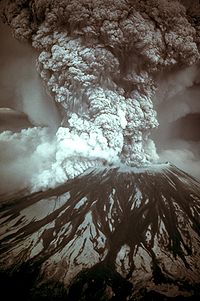
Photo from wikipedia
ABSTRACT Mount St. Helens is a stratovolcano of the Cascadia volcanic arc well known worldwide for its volcanic collapse and eruption in 1980, which caused considerable destruction and changed the… Click to show full abstract
ABSTRACT Mount St. Helens is a stratovolcano of the Cascadia volcanic arc well known worldwide for its volcanic collapse and eruption in 1980, which caused considerable destruction and changed the geomorphology of the volcano and of a considerable portion of its surroundings. This paper presents a geomorphology and surface-geology map of both the wider Mount St. Helens, Washington (USA), at the 1:50,000 scale, and of its crater, at the 1:25,000 scale. The map is obtained from the interpretation of two high-resolution, air-borne acquired, digital terrain models, LiDAR dataset, combined with Google Earth imaging, geological information and field surveys. The geomorphology of the area is largely dominated by landforms connected with the blast of 1980 and the dome extrusion of 2004, which also affected the shape of the main glacier in the crater.
Journal Title: Journal of Maps
Year Published: 2020
Link to full text (if available)
Share on Social Media: Sign Up to like & get
recommendations!